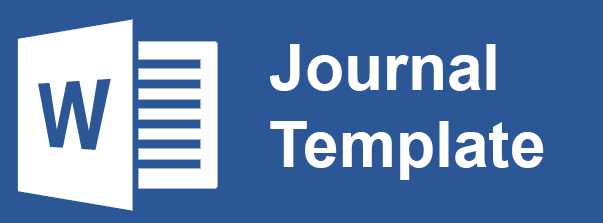Assessing The Impact of Water Quality on Freshwater Aquaculture: A Systematic Literature Review
Abstract
Water quality is a critical determinant of ecosystem sustainability and the productivity of freshwater aquaculture. This study performed a systematic literature review (SLR) to assess the impact of water quality on the growth, health, and yield of freshwater fish. The research examines contemporary technical advancements, such as Internet of Things (IoT) systems, unmanned aerial vehicles (UAVs), machine learning prediction models, and biotechnological methods for monitoring and managing water quality. The literature selection procedure employed the PRISMA framework and encompassed 136 articles sourced from the SCOPUS database. Following rigorous screening processes, three primary publications were chosen for additional examination. The review findings indicate that parameters like dissolved oxygen (DO), pH, ammonia, and temperature significantly influence fish health and production. Contemporary technologies, such IoT and UAVs, have demonstrated their capacity to enhance the effectiveness of water quality monitoring, whilst biotechnology provides novel options for the sustainable treatment of aquaculture waste. This research offers significant insights for scholars, policymakers, and practitioners in the advancement of more efficient and sustainable aquaculture methodologies.
Full Text:
PDF (1-7)References
J. Chen et al., “Underestimated nutrient from aquaculture ponds to Lake Eutrophication: A case study on Taihu Lake Basin,” J Hydrol (Amst), vol. 630, p. 130749, 2024, doi: https://doi.org/10.1016/j.jhydrol.2024.130749.
P. Wu et al., “RETRACTED: Practicality of effluent containing Rubrivivax gelatinosus culturing the crucian carp,” Aquaculture, vol. 514, p. 734418, 2020, doi: https://doi.org/10.1016/j.aquaculture.2019.734418.
H.-L. Tsai, J.-Y. Lin, and W.-H. Lyu, “Design and Evaluation of Wireless Multi-Sensor IoT System for Monitoring Water Quality of Freshwater Aquaculture,” in 2021 International Automatic Control Conference (CACS), 2021, pp. 1–6. doi: 10.1109/CACS52606.2021.9639041.
J. Y. Lin, H. L. Tsai, and W. H. Lyu, “An integrated wireless multi-sensor system for monitoring the water quality of aquaculture,” Sensors, vol. 21, no. 24, Dec. 2021, doi: 10.3390/s21248179.
P. Wu et al., “RETRACTED: Effluent containing Rubrivivax gelatinosus promoting the yield, digestion system, disease resistance, mTOR and NF-kB signaling pathway, intestinal microbiota and aquaculture water quality of crucian carp,” Fish Shellfish Immunol, vol. 94, pp. 166–174, 2019, doi: https://doi.org/10.1016/j.fsi.2019.08.015.
R. Liu et al., “Rhodopseudomonas palustris in effluent enhances the disease resistance, TOR and NF-κB signalling pathway, intestinal microbiota and aquaculture water quality of Pelteobagrus vachelli,” Aquac Res, vol. 51, no. 10, pp. 3959–3971, Oct. 2020, doi: https://doi.org/10.1111/are.14736.
G. Chen et al., “Estimating water quality parameters of freshwater aquaculture ponds using UAV-based multispectral images,” Agric Water Manag, vol. 304, p. 109088, 2024, doi: https://doi.org/10.1016/j.agwat.2024.109088.
N. D. Hettige, H. Rohasliney, Z. H. B. Ashaari, A. B. A. Kutty, and N. R. B. Jamil, “Application of GIS for water quality monitoring in the aquaculture impacted Rawang sub-basin of the Selangor river, Malaysia,” IOP Conf Ser Earth Environ Sci, vol. 711, no. 1, p. 012002, 2021, doi: 10.1088/1755-1315/711/1/012002.
L. Huang, Z. Li, S. Li, L. Liu, and Y. Shi, “Design and application of a free and lightweight aquaculture water quality detection robot,” Journal Europeen des Systemes Automatises, vol. 53, no. 1, pp. 111–122, Feb. 2020, doi: 10.18280/jesa.530114.
T. B. Pramono, N. I. Qothrunnada, F. Asadi, T. W. Cenggoro, and B. Pardamean, “WATER QUALITY MONITORING SYSTEM FOR AQUAPONIC TECHNOLOGY USING THE INTERNET OF THINGS (IoT),” Communications in Mathematical Biology and Neuroscience, vol. 2023, 2023, doi: 10.28919/cmbn/8221.
D. Aryani et al., “Correlation of Water Quality with Microplastic Exposure Prevalence in Tilapia (Oreochromis niloticus),” in E3S Web of Conferences, EDP Sciences, Nov. 2021. doi: 10.1051/e3sconf/202132403008.
M. Rennel and D. Molato, “AquaStat: An Arduino-based Water Quality Monitoring Device for Fish Kill Prevention in Tilapia Aquaculture using Fuzzy Logic,” 2022. [Online]. Available: www.ijacsa.thesai.org
E. A. O’Neill and N. J. Rowan, “Microalgae as a natural ecological bioindicator for the simple real-time monitoring of aquaculture wastewater quality including provision for assessing impact of extremes in climate variance – A comparative case study from the Republic of Ireland,” Science of The Total Environment, vol. 802, p. 149800, 2022, doi: https://doi.org/10.1016/j.scitotenv.2021.149800.
S. Naughton, S. Kavanagh, M. Lynch, and N. J. Rowan, “Synchronizing use of sophisticated wet-laboratory and in-field handheld technologies for real-time monitoring of key microalgae, bacteria and physicochemical parameters influencing efficacy of water quality in a freshwater aquaculture recirculation system: A case study from the Republic of Ireland,” Aquaculture, vol. 526, p. 735377, 2020, doi: https://doi.org/10.1016/j.aquaculture.2020.735377.
D. T. Veeramanikandasamy, P. Babu, S. Devendiran, and N. Aravind, Internet of Farming Things and RTOS based Robotic System for Water Quality Monitoring and Fish Feeding in Freshwater Aquaculture. 2023. doi: 10.1109/ICCCNT56998.2023.10308205.
Haddaway, N. R., Page, M. J., Pritchard, C. C., & McGuinness, L. A. (2022). PRISMA2020: An R package and Shiny app for producing PRISMA 2020-compliant flow diagrams, with interactivity for optimised digital transparency and Open Synthesis Campbell Systematic Reviews, 18, e1230. https://doi.org/10.1002/cl2.1230
DOI: https://doi.org/10.37058/jaisi.v3i1.14180
Refbacks
- There are currently no refbacks.
International Journal of Applied Information Systems and Informatics (JAISI)
Department of Information Systems, Faculty of Engineering, Siliwangi University Tasikmalaya
email: jaisi@unsil.ac.id
Jalan Siliwangi No. 24 Kelurahan Kahuripan Kecamatan Tawang Kota Tasikmalaya 46115

This work is licenced under a Creative Commons Attribution 4.0 International Licence






